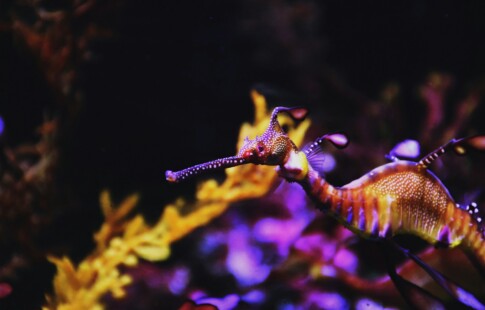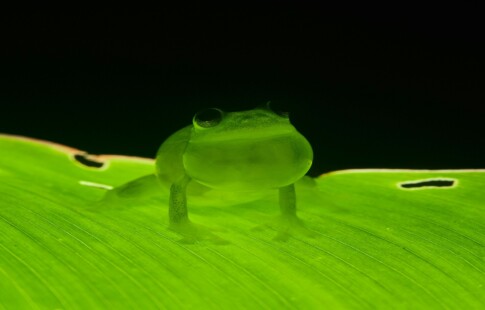
What is a Flagship Species?
We are reader-supported. When you buy through links on our site, we may earn affiliate commission.
Which animal do you picture when you think about endangered species? Odds are, it isn’t a Lord Howe Island cockroach. No, if you’re like most people, the first thing that comes to mind is a panda, lion, giraffe or other charismatic mammal with human-like traits. That’s because these animals are flagship species — people respond positively to them, so conservation initiatives like to use them as examples of species that need our help.
How Did This Strategy Start?
It’s unclear who coined the term “flagship species,” but the idea of using large, charismatic vertebrates as ambassadors for conservation got started in the 1980s. Around this time, there were several organizations pushing for the protection of endangered animals like giant pandas and African elephants.
You’ve probably seen dozens of examples of flagship species: The World Wildlife Fund uses a giant panda as its logo, Yellowstone sells stuffed grey wolf toys and black rhinos have made their way onto Tanzanian currency.
In essence, flagship species are used as visual symbols to draw attention to conservation efforts.
What Do Flagship Species Have in Common?
Here are a few characteristics that often define flagship species:
- They’re Mammals
For a start, they’re usually vertebrates, meaning they have a backbone, and they’re almost always mammals. There are exceptions to this rule, like the bald eagle, but very few birds, reptiles, fish or amphibians make the cut.
- They Aren’t Too Scary
They can’t be species that people consider pests, like rats, or animals that have universally negative connotations, like parasites or scavengers. You probably won’t see a hyena or carrion beetle printed on a coin any time soon.
Although most people are, understandably, afraid of lions and bears, these animals are also symbolic of nature itself in many cultures. They inspire a sense of awe and wonder from afar.
- They Act Like Us
Flagship species are often easy to anthropomorphize because they perform many of the same behaviors as humans. Pandas, for example, nurse and care for their babies, which is considered an admirable trait. Humpback whales form social groups and sing to each other.
Clamworms, which resemble centipedes and reproduce by breaking into pieces that swim away silently, are less relatable. You most likely haven’t even heard of these animals, much less want to protect them.
- They’re Majestic or Cute
This brings up another point: Flagship species have to look good. Ideally, they have an easily identifiable shape and colors, making them instantly recognizable.
Fuzzy, fluffy and fat animals with big eyes appeal to our desire to care for babies. Sleek, muscular or powerful animals look majestic and healthy. Grizzly bear cubs fit into the first category, while rhinos and gorillas fall into the second group.
Aye-ayes, however, are a great example of an endangered animal that doesn’t get much media attention — with their bulging eyes, wiry hair and uncomfortably long, thin fingers, they’re not the first primate people would cuddle with if given the chance.
An animal’s appearance can directly influence conservation efforts. In fact, some locals will go out of their way to hunt aye-ayes due to cultural superstitions that the animals use their middle finger to stab sleeping people in the heart. As a result, their population is declining, and trying to protect them is an uphill battle.
- They Need Help
In addition to the aforementioned qualities, flagship species need help when it comes to conservation. They might be currently or formerly endangered. They may also be affected by climate change. Or, they have a declining population or live in an area with intense human development.
- They’re Umbrella Species
Another ideal quality that flagship species candidates have: sharing habitat with other animals, plants and habitats that need protection. An umbrella species is an animal whose conservation would benefit the surrounding ecosystem.
For example, when conservationists set aside old-growth forests to protect northern spotted owls in California, they also inadvertently protected salamanders and mollusks that were living in the same area. The spotted owls are also considered a flagship species.
- They Have Cultural Relevance
What would it mean to lose bald eagles forever? In the United States, where the bald eagle is both a flagship species and the national bird, it would mean losing a metaphor for freedom, power and courage. The species’ extinction would not only have ecological ramifications but far-reaching cultural effects, as well.
Flagship species often represent a certain country or region of the world, a symbol that may go back thousands of years. They can inspire feelings of pride in one’s heritage and cultural traditions. These species may also stimulate a country’s economy because tourists want to see them in the wild.
Important Considerations
Although choosing flagship species is a valid marketing technique, the main goal should always be species conservation. Environmental groups should not try to profit off of an endangered animal’s plight unless they use the funds for conservation.
Furthermore, less charismatic species still need help, too. They should be included when making conservation decisions. Environmental groups can use charismatic megafauna, like manatees or tigers, as a symbol to draw attention to the struggling ecosystems where these animals live. Then, conservation groups can educate people on all of the species that share that habitat and why they need help.
Environmental organizations should also stress to people that just because an animal’s image is widespread, the species itself isn’t necessarily doing well. Giraffes are printed on everything from tote bags to nursery walls, but are rapidly dying off in the wild. Meanwhile, the most abundant vertebrate on the planet is the bristlemouth fish. Most people have never heard of it.
Conservation groups must work to minimize the chances of humans and flagship animals interacting in the wild.
People coming in contact with Asian elephants in the wild, for example, are less likely to participate in their conservation. Ranchers dealing with cheetah attacks on their livestock will view the cats in a negative light and may even shoot them. To promote flagship species conservation, conservationists must try to keep them away from people except in the case of zoos and wildlife refuges.
Managing At-Risk Species
It’s not just charming animals at risk for extinction. There are numerous insects, amphibians, plants and fungi that need protection, too. Flagship species have their place as a conservation tool, but they should only be one part of a larger plan to conserve whole ecosystems.
Share on
Like what you read? Join other Environment.co readers!
Get the latest updates on our planet by subscribing to the Environment.co newsletter!
About the author

Steve Russell
Steve is the Managing Editor of Environment.co and regularly contributes articles related to wildlife, biodiversity, and recycling. His passions include wildlife photography and bird watching.





